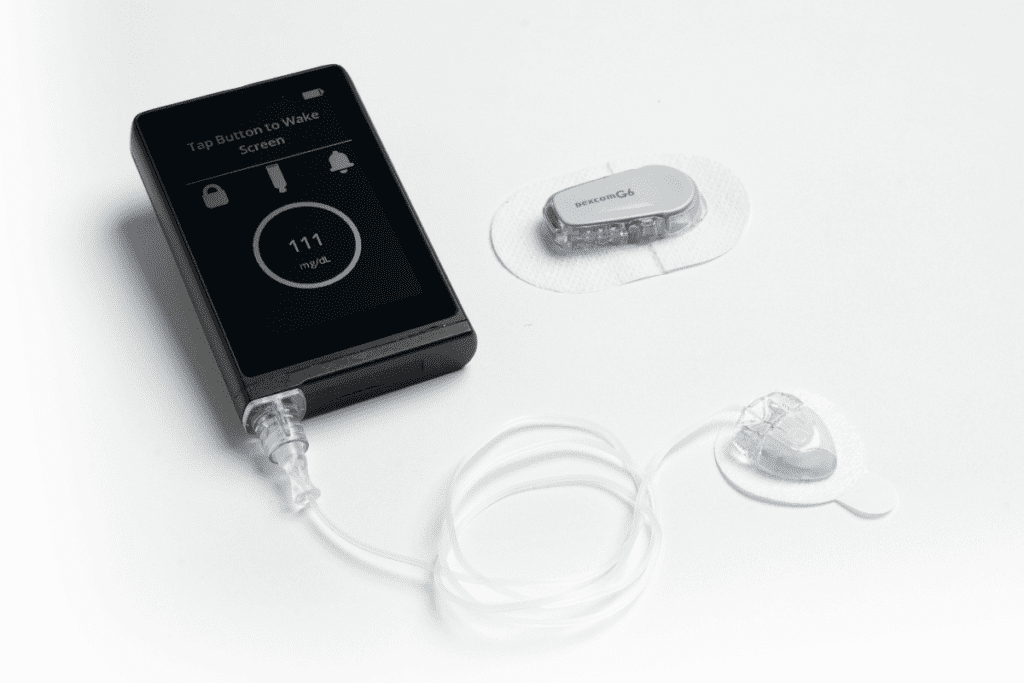Introduction
Diabetes mellitus, a chronic metabolic illness that affects millions around the world, has long been treated with a combination of insulin injections, blood sugar monitoring, and dietary changes. Recent advances in medical technology, however, have cleared the path for a game-changing innovation known as the “Artificial Pancreas System” (APS). This cutting-edge device seeks to improve the lives of people living with diabetes by automating blood sugar regulation. In this article, we will look at the artificial pancreas system’s idea, components, benefits, problems, and future prospects.
Understanding the Synthetic Pancreas System
The artificial pancreas system is a ground-breaking medical technology that mimics the complex activities of the human pancreas in controlling blood glucose levels. It combines continuous glucose monitoring (CGM) technology with an insulin delivery system, most often an insulin pump. These components work in tandem to provide real-time monitoring and automatic insulin dosage change based on the individual’s glucose levels.
Artificial Pancreas System Components
Continuous Glucose Monitoring (CGM): The CGM, a wearable device that continually tracks glucose levels in the interstitial fluid, is at the heart of the artificial pancreas system. This information is wirelessly communicated to a control algorithm, which uses it to make informed insulin dose decisions.
The control algorithm, a fundamental component of the artificial pancreas, anticipates changes in blood glucose levels using complicated mathematical models and predictive analytics. To give precise insulin dosage recommendations, it takes into account a variety of criteria such as carbohydrate intake, physical activity, and individual insulin sensitivity.
Read Guide about Wegovy Dosage Guide: The Best Way For Weight Loss
Insulin Delivery Mechanism: An insulin pump is in charge of administering insulin subcutaneously. The insulin pump connects directly with the control algorithm in a closed-loop system, ensuring seamless modifications in response to changing glucose levels.
Advantages of an Artificial Pancreas System
Improved Blood Glucose Control: One of the fundamental benefits of the artificial pancreas system is its ability to keep blood glucose levels steady. The device can prevent hyperglycemic (high blood sugar) and hypoglycemic (low blood sugar) episodes by responding to variations in real time, lowering the risk of diabetes-related consequences. Please fill out this form to determine whether or not you or a friend are eligible for a CGM.
Insulin Dosage Automation: APS improves quality of life by removing the strain of continual glucose monitoring and manual insulin dose. Individuals with diabetes can have more flexibility because the system automates most of the management process, allowing for more flexible daily activities and improved sleep quality.
Reduced Complication Risk: Tighter glucose control, made possible by APS, can lead to a lower risk of long-term consequences like diabetic retinopathy, nephropathy, and neuropathy. This not only improves people’s general health but also lowers healthcare costs.
Customizable and adaptable: APS algorithms are designed to be responsive to individual physiology and lifestyle variances. This individualized approach ensures that insulin dose is adjusted to each individual’s specific needs, increasing the system’s effectiveness.
Considerations and Obstacles
Regulatory Approval: Despite APS’s tremendous promise, obtaining regulatory approval and assuring safety continue to be substantial problems. Extensive testing and validation are required to show the system’s reliability and reduce dangers.
Precision of the Control Algorithm: The accuracy of the control algorithm is critical for successful APS operation. Meal composition, exercise intensity, and stress levels can all have an impact on blood glucose levels, necessitating sophisticated algorithms capable of handling a wide range of scenarios.
Sensor Reliability: The dependability of CGM sensors is critical for correct data entry. Inaccuracies in sensors can lead to inaccurate insulin dose decisions, thereby generating negative health implications.
User instruction: Adequate training and instruction are required to ensure that users understand how to use and troubleshoot the APS. For successful incorporation into daily life, users and healthcare providers must communicate clearly.
APS’s Future: Advances and Possibilities
The artificial pancreas system’s future is defined by ongoing technological and medical research advances. Here are some areas for growth and potential benefits:
Current APS designs are typically referred to as hybrid closed-loop systems since they automate insulin delivery while still requiring user participation for mealtime insulin doses. Future iterations will strive for a fully closed-loop system that eliminates the need for manual adjustments.
Remote Monitoring and Data Sharing: Integrating APS with telemedicine platforms allows healthcare personnel to remotely monitor and alter insulin dosages for patients. This improves patient treatment, particularly for people living in remote or underdeveloped locations.
Pediatric Diabetes Treatment: APS technology shows a lot of potential for pediatric diabetes treatment. Its ability to adapt quickly to glucose changes corresponds to the changing needs of growing children and adolescents.
Integration with Other Health Indicators: Future APS systems may include health indicators other than glucose, such as ketone levels, heart rate variability, or even sleep patterns, in addition to glucose. This holistic approach would provide a thorough picture of a person’s health.
Also Read About AI-Powered CGMs
Conclusion
The artificial pancreas device is a ray of hope for diabetics, with the potential to revolutionize diabetes management. APS presents the potential of tighter glucose control, higher quality of life, and lower risk of complications through the integration of continuous glucose monitoring, advanced control algorithms, and insulin delivery systems. While there are still obstacles, ongoing research and technology developments are moving the industry forward, bringing us closer to a future when diabetes management is safer, more efficient, and less stressful.


